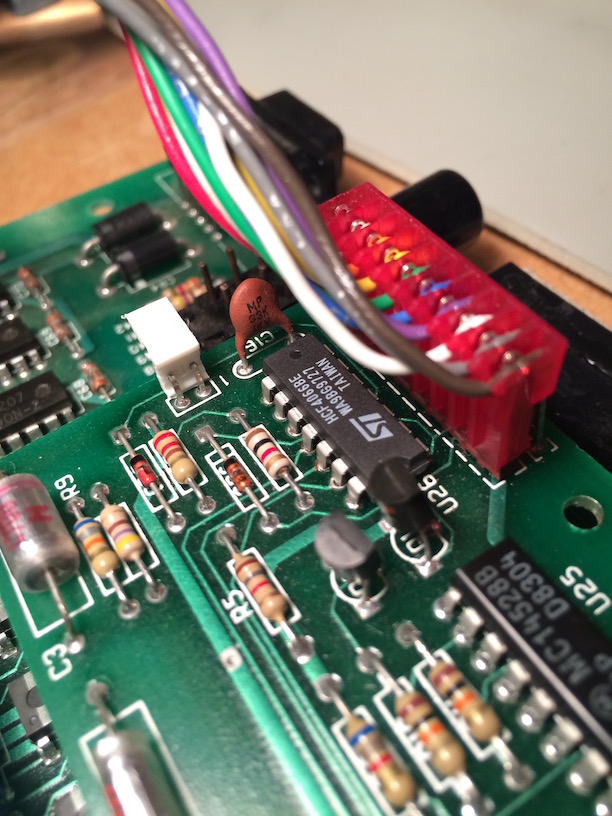I have a small Osborne obsession. They represent three machines in my modest collection of early microcomputers: an Osborne 1 (S/N 02016) with the stand-in vacuum-formed brown case; an Osborne 1A (S/N 003803) with the updated hard plastic case; and an Osborne Executive, OCC-2 (S/N 18135). Both OCC-1 models have the 80-column display and double-density disk upgrades. The OCC-1A came with the "COM-PAC" modem that fits in one of the disk storage bays. The computers are robust CP/M machines, unusual for their form factor, and representative of innovative marketing and even more innovative corporate management that led to the Osborne Computer Company's rapid rise and demise.The problemThe Osborne 1A developed horizontal lines on the screen. The lines appeared slowly, and sometimes disappear. The computer has the SCREEN-PAC 80 column upgrade board and the double density disk option. The lines also disappear when the 20 pin P3 "harness" between the SCREEN-PAC board and the OCC motherboard is removed. The contrast becomes low. With the harness removed, there is no signal generated by the SCREEN-PAC board. The lines only appear in the 52 column mode. When control is turned over to the 80 column board, the lines disappear. A discussion here describes the operation of the SCREEN-PAC
The fixA repair is pending. I believe the problem is U26 on the SCREEN-PAC board, a CD4066 quad bilateral switch. It looks like there is leakage from the 80 column output even when it is switched into 52 column mode. I can see what looks like the "80 column" output being sent to the video circuit. A bit later... I got lucky while working on this machine. I was puttering around with it when the lines disappeared. It was cold that afternoon in my local retrobunker. I could cause the lines to come back by heating the area around U26 with my work lamp. After removing the lamp, the lines would slowly fade away, presumably as it cooled back down. Parts U26, C2, Q1 or Q2 were all in the area I was heating, but based on the output of U26 on the oscilloscope, it was pretty clear that the switch was going bad. The first image below shows the output of U26 pin 8 (top trace) and pin 10 (bottom trace) when no lines are present. Pin 8 is the output of the chip. It should (and does) show the 52-column output being sent to the video circuitry with the 80-column signal switched off. The bottom trace is the 80-column signal generated by the SCREEN-PAC board (at pin 10) that's not making it to the switch output. When the lines start showing on the monitor, leakage of each signal appears on the complementary signal (second image). In the top trace, it's the appearance of the 80-column signal that leads to the screen lines. There is also a substantial reduction in the HSYNC pulse—it should drop to 0V.   I desoldered U26 and replaced it with the STMicroelectronics 4066 chip shown below. So far, the fix has held up after an hour of "burn-in" and another hour or so of use. |



